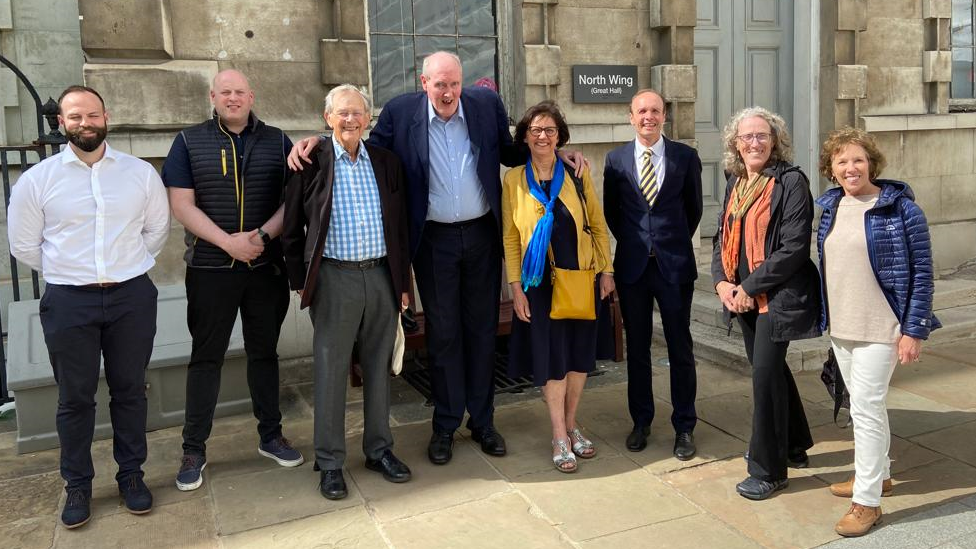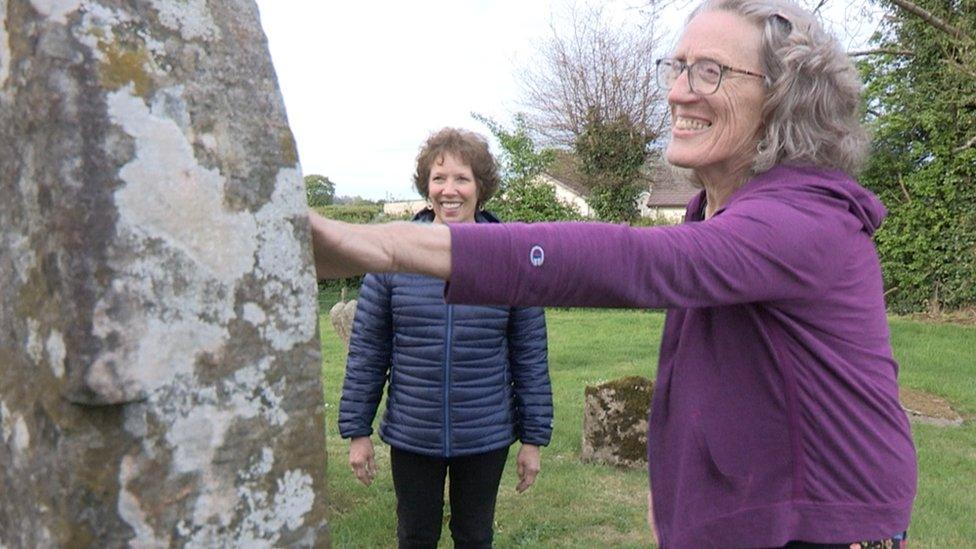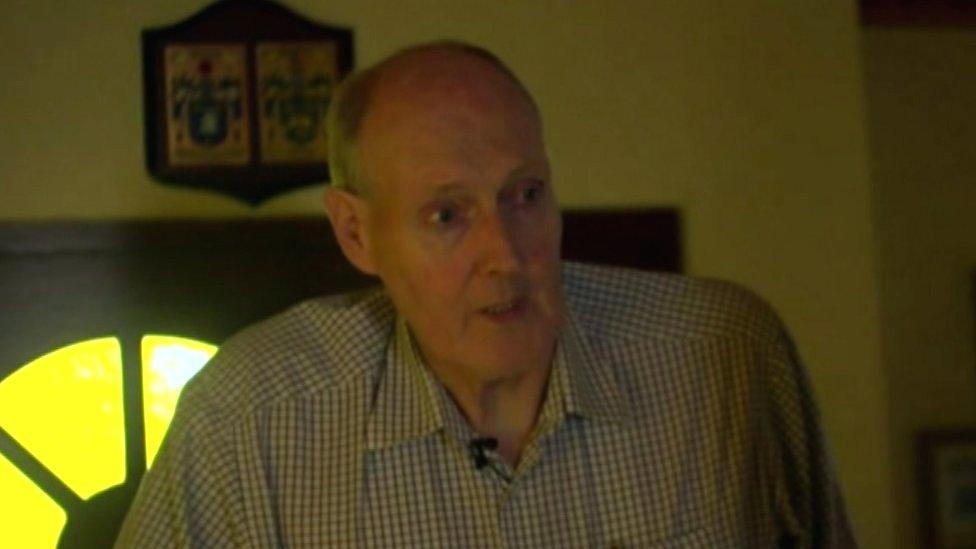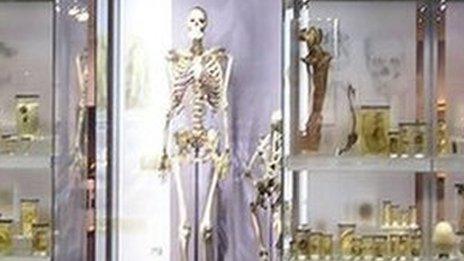Acromegaly: 'Giant gene' bond forged between US and Mid Ulster
- Published
American woman discovers Irish giant gene ancestry
When Colleen Snyder researched her family history during the Covid-19 pandemic, she did not expect to discover a connection to the legend of Irish giants.
Colleen, from Virginia in the United States, suffers from a rare genetic condition called acromegaly or gigantism.
The gene caused Charles Byrne, born in 1761 near Cookstown and known as the "Irish giant", to grow more than 7ft 6in (2.3m) tall.
Medical researchers have previously identified Mid Ulster as a "hotspot" where one in 150 people have the genetic mutation, compared to one in 1,000 in Belfast and one in 2,000 in the rest of the UK.
Colleen first developed symptoms when she was eight, but the condition was not diagnosed until she was 20.
Doctors in the USA told her it was rare to develop acromegaly at such a young age.
"They would say we don't know anybody who had it so early so I knew that that was very, very unusual," Colleen explained.
"Through the years I kept trying to find somebody that had the same condition, get more information about it and I couldn't."
That was until she began to research her family history during the lockdown.
"I've always known that I've had Irish heritage and my given name is Mary Colleen which is quite an American-Irish name," she said.
Her great-great grandfather John McGurk emigrated with his three siblings in 1861.
She thought the McGurks came from County Cork, where most ships departed for the transatlantic crossing to a new life in America.
When she looked at her family tree she realised her ancestral home was in fact Clonoe, near Coalisland in County Tyrone, the centre of the giant gene "hotspot".

Brendan Holland (centre) and Colleen Snyder (second from right) meeting with a group including Prof Marta Korbonits and Prof Michael Besser
Colleen contacted Marta Korbonits, professor of endocrinology at Barts and the London School of Medicine, Queen Mary University of London, who discovered the genetic link for the Irish giant gene.
She sent the results of a DNA test to Professor Korbonits, who confirmed she had the same mutation.
Living carriers of the gene share a common ancestor who lived about 2,500 years ago.

What is the 'giant gene'?
A gene called AIP can result in a non-cancerous tumour in the pituitary gland, a pea-sized gland just below the brain.
It can lead to too much growth hormone being produced and released
Only 20% of carriers of the defective gene will develop symptoms.
These include people growing abnormally tall, hormonal problems and infertility.
In many cases it is disfiguring but it can also be life-threatening.
The condition, called acromegaly or gigantism, can be successfully treated with brain surgery and medication.

Prof Korbonits put Colleen in touch with Brendan Holland from Dungannon, County Tyrone, who is 6ft 9in (2.1m) and a distant relative of Charles Byrne.
Within minutes, Brendan and Colleen were talking on the phone, a moment Colleen described as "very emotional".
"I had been looking for 45 years for someone," said Colleen, "and here's this Irish accent on the phone".
"And all of a sudden I was talking to someone who can understand what it was like to have a pituitary tumour that causes you to have the excess growth and have all the kinds of physical problems that I had."

Colleen Snyder and her sister Cherie have been looking for the McGurk family graves at St Michael’s parish cemetery in Clonoe near Coalisland
For Brendan, speaking to Colleen was confirmation of his belief that the gene had been carried overseas by the many thousands of people who emigrated from County Tyrone.
"[Colleen] is actually a product of that immigration in 1861," said Brendan, "and it just reinforced my conviction that this has to be more common than perhaps we realise."
'Rich world of folklore'
"It was more than just finding somebody with the same condition, it was making a connection with someone who is fascinated by the whole story, has a shared interest in the history of it," he added.
Colleen recently made the trip to County Tyrone to meet Brendan in person and to visit the townland which the McGurks left for America more than 160 years ago.
After more than a year of zoom calls on a computer, Colleen said the visit had revealed a "rich world" of giant folklore.
Colleen also accompanied Brendan to London to meet Prof Korbonits and others who are involved in treating and researching the condition.
For Brendan and Colleen, their shared experience is part of a mission to educate people about the importance of knowing if you have the gene so that they can be tested and treated to avoid the devastating effects which they experienced of having a tumour.
"For me, to find out that I'm the first person in the United States that they found with this, that's pretty cool, I feel great," said Colleen.
"It's wonderful, but wait a minute there's got to be other people."
They now plan to co-write a book to raise awareness amongst the Irish diaspora.
Related topics
- Published12 October 2016

- Published8 February 2013
